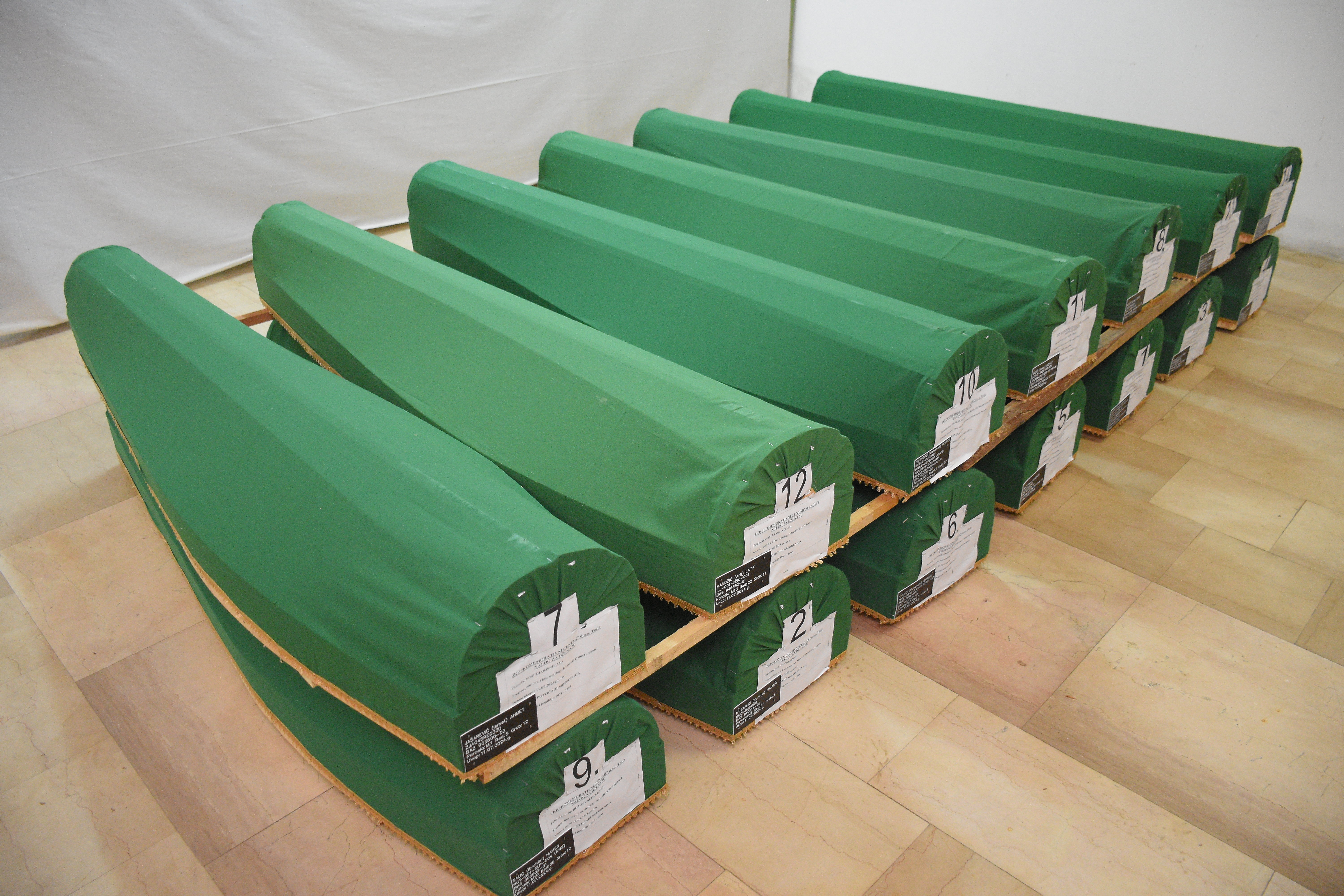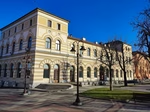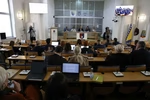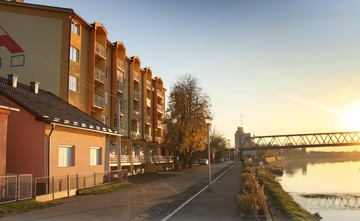
Remains of victims of the July 1995 genocide in Srebrenica are ready for burial at a collective funeral on July 11 this year at the Srebrenica-Potocari Memorial Center cemetery.
This year, the remains of 14 victims of the genocide committed in July 1995 against the inhabitants of the "UN protected zone" in Srebrenica will be buried at the Memorial Center cemetery in Potocari. Among the 14 victims to be buried this year are two brothers and a minor.
The green coffins with the remains of genocide victims are ready at the JKP "City Cemeteries" Visoko premises, from where they will depart on July 9 for Potocari, where they will be buried on July 11 at the collective funeral.
The youngest victim to be buried this year is 17-year-old Beriz (Omera) Mujic, born in 1978 in Zvornik. His remains were found 28 years after his death, exhumed just last year, in May 2023.
He was killed in July 1995 in the Suceska area near Bratunac, and his remains were exhumed in the Srebrenica municipality area. He will be buried next to his brother Hazim, who was buried in 2013.
The oldest victim to be buried so far is Hamed (Ibrahima) Salic, born in 1927. He was 68 years old when he went missing in the summer of 1995 in the Zepa area. His remains were exhumed at the Slap site in Zepa in May 2014.
This year, the Efendic brothers - Hasib and Camil - will be buried together. Their remains were exhumed from different graves in the Srebrenica, Kula, and Potocari areas in 2011 and 2006. They will find their final rest this year next to their third brother Edhem, who was buried in Potocari in 2007.
Kenan Karavdic, assistant director of JKP "City Cemeteries" Visoko, told Anadolu that the coffins with the victims of the Srebrenica genocide are ready for burial on July 11.
Since the end of the war, and even a few years during the war, JKP "City Cemeteries" Visoko has been involved in the processes of exhumation, identification, and burial of those killed during the war events.
"Since 2003, JKP 'City Cemeteries' Visoko has been involved in the project of exhumation, identification, and burial of Srebrenica victims in Potocari. In the first years, all exhumed Srebrenica victims were brought to Visoko, which is why the connection between Visoko, Srebrenica, and the Memorial Center remains. Some of the remains were transported to the Podrinje Identification Project in Tuzla in 2000, where their identification is still ongoing," explained Karavdic.
He stated that due to tradition and previous years, JKP "City Cemeteries" Visoko continues to carry out the burial and transportation of remains from Visoko to Potocari.
"Unfortunately, this year, only 14 identified victims are ready, which shows how significant the problem of the passage of time is since they perished and had living close relatives. There is an appeal from all of us involved in this work for families to provide blood samples again to reduce the number of unidentified remains. This is not only about Srebrenica but also about the problem we have encountered after so many years. There is a large number of unidentified remains in Tuzla, Gorazde, and other cities in Bosnia and Herzegovina. We have 800 unidentified remains. They are likely people who perished in the last war," emphasized Karavdic.
According to him, the reason for this situation is probably that families have moved away, disappeared, or were killed, but there is also a possibility of incorrect identifications.
The convoy departs on July 9 from Visoko
"As far as Srebrenica victims are concerned, I don't think there are any incorrect identifications in Potocari," Karavdic emphasized.
The convoy with the coffins of those killed in the Srebrenica genocide will depart from Visoko at 10 a.m. on July 9, heading towards Potocari.
"The convoy will stop in Ilijas, Vogosca, then around noon in front of the Presidency building in Sarajevo, in front of the Monument to the Murdered Children of Sarajevo, at Markale, and then briefly in front of the City Hall. They should arrive in Potocari around 4 p.m.," explained Karavdic.
This year, on July 11, the following individuals will be buried in the cemetery of the Srebrenica-Potocari Memorial Center: Hasib (Uzejir) Efendic, born in 1931, Camil (Uzejir) Efendic, born in 1928, Mehmed (Daut) Krdzic, born in 1961, Sabrija (Asim) Omic, born in 1966, Musan (Ramo) Siljkovic, born in 1956, Sakib (Ragib) Harbas, born in 1975, Beriz (Omer) Mujic, born in 1978, Ahmet (Ismet) Jasarevic, born in 1971, Nevres (Mehmed) Salihovic, born in 1970, Ibrahim (Muharem) Salkic, born in 1935, Midhat (Adem) Basic, born in 1973, Hajdin (Kadrija) Mustafic, born in 1959, Latif (Arif) Mandzic, born in 1964, and Hamed (Ibrahim) Salic, born in 1927.
The remains of 11 more identified genocide victims are in the Commemorative Center in Tuzla, but their families have not yet given consent for their burial, mainly due to the incompleteness of their bodies.
The search for missing persons continues, and the Institute guarantees that all remains found and identified later will be added to the previously buried skeletal parts in re-exhumation processes.
This year, after the collective funeral in Potocari, the re-exhumation process will begin on July 15, and the remains of 78 victims will be re-exhumed this year. Their remains, found and identified later, will be added to them.
Re-exhumations will last until July 22.
The Potocari Memorial Center was officially opened on September 20, 2003, by former U.S. President Bill Clinton. So far, 6,751 genocide victims have been buried at the Srebrenica-Potocari Memorial Center, while 250 victims have been buried in local cemeteries by the decision of surviving family members.
The victims come from different municipalities, most from Srebrenica, Bratunac, Vlasenica, Zvornik, and Milici. Genocide victims were found at 150 different locations, including 77 mass graves. The youngest victim buried in Potocari was a newborn baby girl, Fatima Muhic, and the oldest was grandmother Saha Izmirlic, born in 1901.
The search for more than a thousand genocide victims is still ongoing.
Kakvo je tvoje mišljenje o ovome?
Učestvuj u diskusiji ili pročitaj komentare





 Srbija
Srbija
 Hrvatska
Hrvatska
 Slovenija
Slovenija



























































